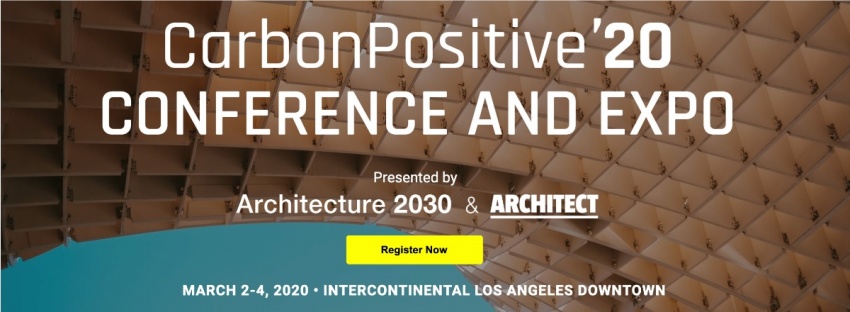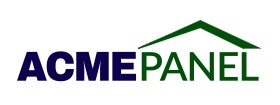

AN UNPRECEDENTED ACHIEVEMENT
Just when the outlook for meeting the 1.5°C Paris Climate Agreement target seems hopeless and unattainable, a potent confluence of actions taking place in the architecture, planning, and building community, and in cities and sub-national governments worldwide, has led to an extraordinary development. The sheer will and refusal to accept the status quo by this group has made the seemingly hopeless, now very possible.
In the U.S., economic growth and building construction have decoupled from building sector energy use and CO2 emissions – an unprecedented achievement in modern U.S. history. This decoupling appears to be actualizing globally as well.
This unprecedented achievement illustrates that extraordinary emissions reductions can be obtained in the building sector at little to no-cost, and in the U.S. context, at a substantial economic benefit. All this and more will be explored at the CarbonPositive'20 Conference taking place in Los Angeles in a few weeks (March 2-4), and the lessons learned will be applied to dramatically accelerate emissions reductions in the entire built environment, including building and infrastructure design, materials, construction, and processes.
Learn more about CarbonPositive'20
HOW IT ALL HAPPENED
Between 1995 and 2005, U.S. economic growth (Gross Domestic Product or GDP) and building sector floor area, energy use and CO2 emissions increased by 43.9%, 22.9%, 20.2% and 19.5% respectively. This coupling of the building sector and economic growth has been the case since the industrial revolution.
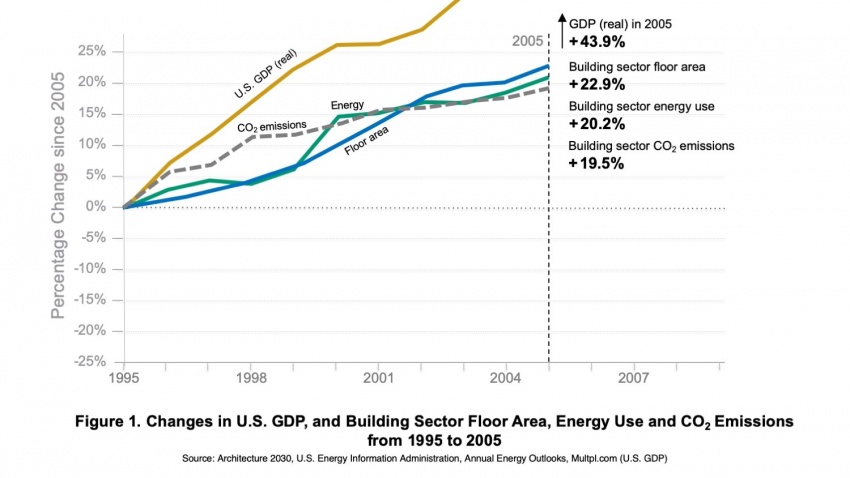
In 2005 the "2030 Challenge" was issued, calling for an immediate 50% fossil-fuel and energy consumption reduction in new buildings and major renovations, increasing incrementally to carbon neutral by 2030. The Challenge was immediately adopted by the U.S. Conference of Mayors, American Institute of Architects, the U.S. government for federal buildings, and subsequently by many other sectors of the built environment, both nationally and internationally.
Between 2005 to 2019, U.S. economic growth and increasing building construction decoupled from building sector energy use and CO2 emissions.
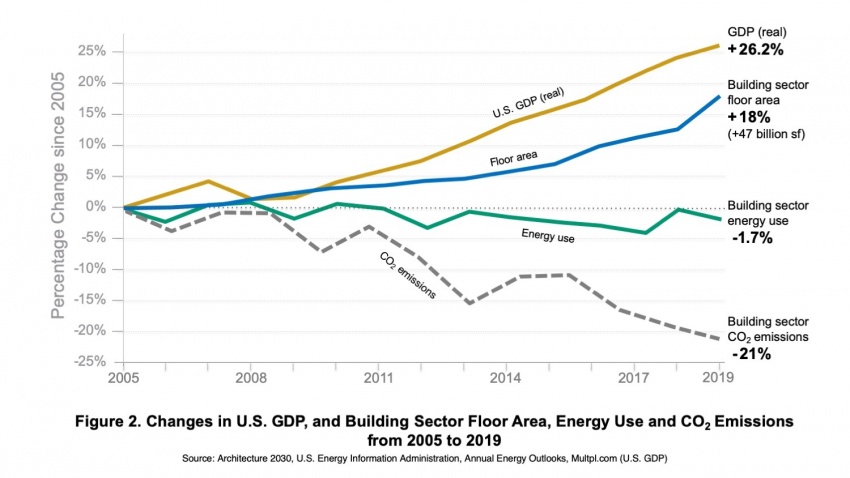
While U.S. GDP and building sector floor area increased 26.2% and 18% respectively, building sector energy use decreased by 1.7%, and building sector CO2 emissions decreased by 21%, even though the U.S. added about 47 billion square feet to its building stock.
Also, in 2005, the U.S. Energy Information Administration (EIA) projected that building sector energy use from 2005 to 2019 would increase by 24.2%. However, actual building sector energy use decreased by 1.7% during that period, saving households and businesses throughout the U.S. about $1.8 trillion in projected energy costs.
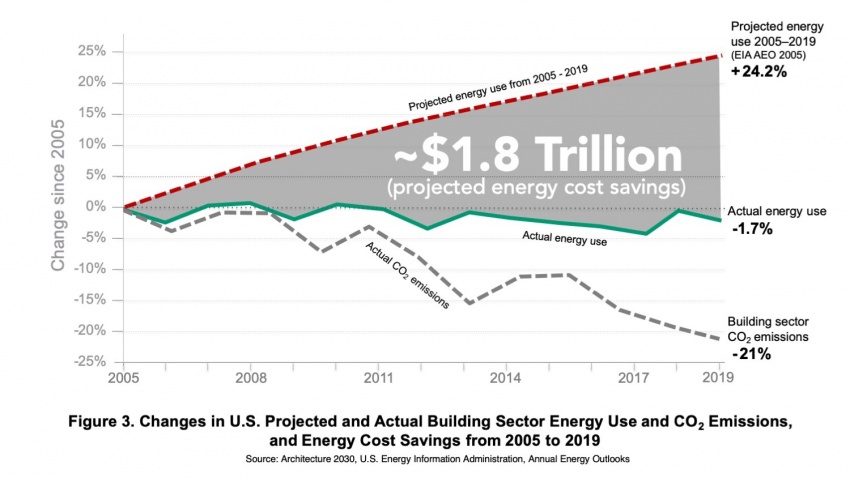
GLOBAL ECONOMIC GROWTH AND THE BUILDING SECTOR
The decoupling of economic growth and building sector energy consumption and CO2 emissions appears to be actualizing globally as well.
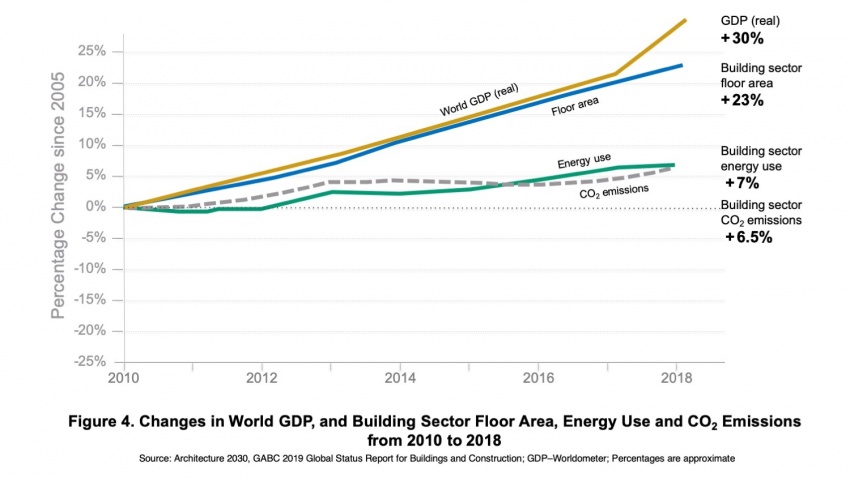
While global GDP and building sector floor area increased 30% and 23% respectively from 2010 to 2018, world building sector energy use increased by only 7% and building sector emissions by 6.5%. Building sector emissions have been relatively flat since 2013, even though global building floor area increased by approximately 376 billion square feet during this period.
WHAT NOW?
There has never been a greater urgency for climate action. In order to meet Paris Agreement goals, ambitious targets must now be set, and specific actions undertaken, to reduce fossil fuel CO2 emissions in the built environment by 50% to 65% by 2030, and completely phase out CO2 emissions by 2040.
The architecture, planning, building community, and cities, have accomplished the seemingly impossible and have paved the way forward. With more persistence and more effort, what seemed hopeless is now very possible. All this will come together at CarbonPositive'20 where we will initiate a great acceleration in worldwide carbon emissions reductions and transition to a carbon positive future.
Join the great transition at:
CarbonPositive'20
You don't want to miss this!
Los Angeles, March 2-4, 2020
From:
Architecture 2030
607 Cerrillos Road
Santa Fe, New Mexico 87505

